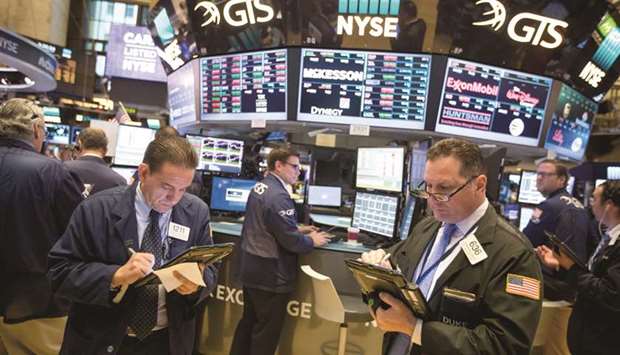While some investors see bargains in lower valuations of regional banks’ shares, few can point with any confidence to near-term catalysts for a turnaround in their fortunes.
After outperforming larger banks in the wake of the November 8 US Presidential election, the S&P 600 index of small cap banks are down 8.1% so far this year, data through Thursday showed, while the S&P 500 index of the biggest US banks is unchanged.
The full S&P 500, meanwhile, is up 8.7%. Last year, investors bet heavily that smaller, entirely US-focused banks would benefit most from Donald Trump’s promises of tax cuts, deregulation and economic stimulus.
But those hopes dwindled dramatically as it became clear that President Trump would have difficulty gaining enough support to deliver on any of his pro-growth proposals.
“I would expect (smaller banks) to continue to underperform as long as we don’t get some of these policy decisions to move through,” said Stephen Scouten, banking analyst for Sandler O’Neill in Atlanta.
Fading hopes for an economic boost from Trump’s agenda has compressed the gap between short- and long-term interest rates, putting pressure on bank loan profit margins.
This is a bigger issue for regionals which have a greater dependence on lending for their profits than bigger, more diversified banks.
Also, commercial and industrial loan growth has slowed this year after climbing steadily since late 2010.
The Federal Reserve’s latest Senior Loan Officer Opinion Survey, released May 8, showed domestic banks reporting weaker commercial and industrial loan demand from firms of all sizes in the first quarter.
Part of the problem is that companies are waiting for clarity on economic growth prospects and tax rates before making borrowing decisions, according to investors and analysts.
“Eventually, for the smaller banks to outperform, concerns about the overall economy need to dissipate.
Better economic growth usually leads to better lending growth and in that environment the yield curve steepens as well,” said Brian Kleinhanzl, analyst at Keefe, Bruyette & Woods in New York.
Short selling has decreased in most regional and diversified banking sectors so far this year. But short interest in both the SPDR S&P Bank Exchange Traded Fund and SPDR S&P Regional Banking ETF increased as short sellers may be replacing exposure to individual banks with short bets on the sector.
Short interest in the S&P bank ETF is up 36% for the year while it is up 23% in the regional banking ETF.
While tax cuts are viewed as one of the biggest boosts for regional banks of all Trump’s policy proposals, investors are sceptical it will come any time soon.
JPMorgan analysts on Thursday scaled back their forecast on the size of possible US tax cuts and pushed out the timing to the second quarter of 2018 from the third quarter of 2017. White House economic adviser Gary Cohn has said he expects US Congress to get tax reform done this year.
But investors say 2018 would likely be the earliest this could happen.
Treasury Secretary Steven Mnuchin is expected this month to unveil plans for regulating the US banking sector including a relaxation of regulations for community banks, which have struggled with rules imposed after the 2007 to 2009 financial crisis.
While investors expect the administration to have trouble winning congressional support for legislative changes to regulations such as Dodd-Frank, some are hoping Trump will be able to appoint people to key regulatory positions.



